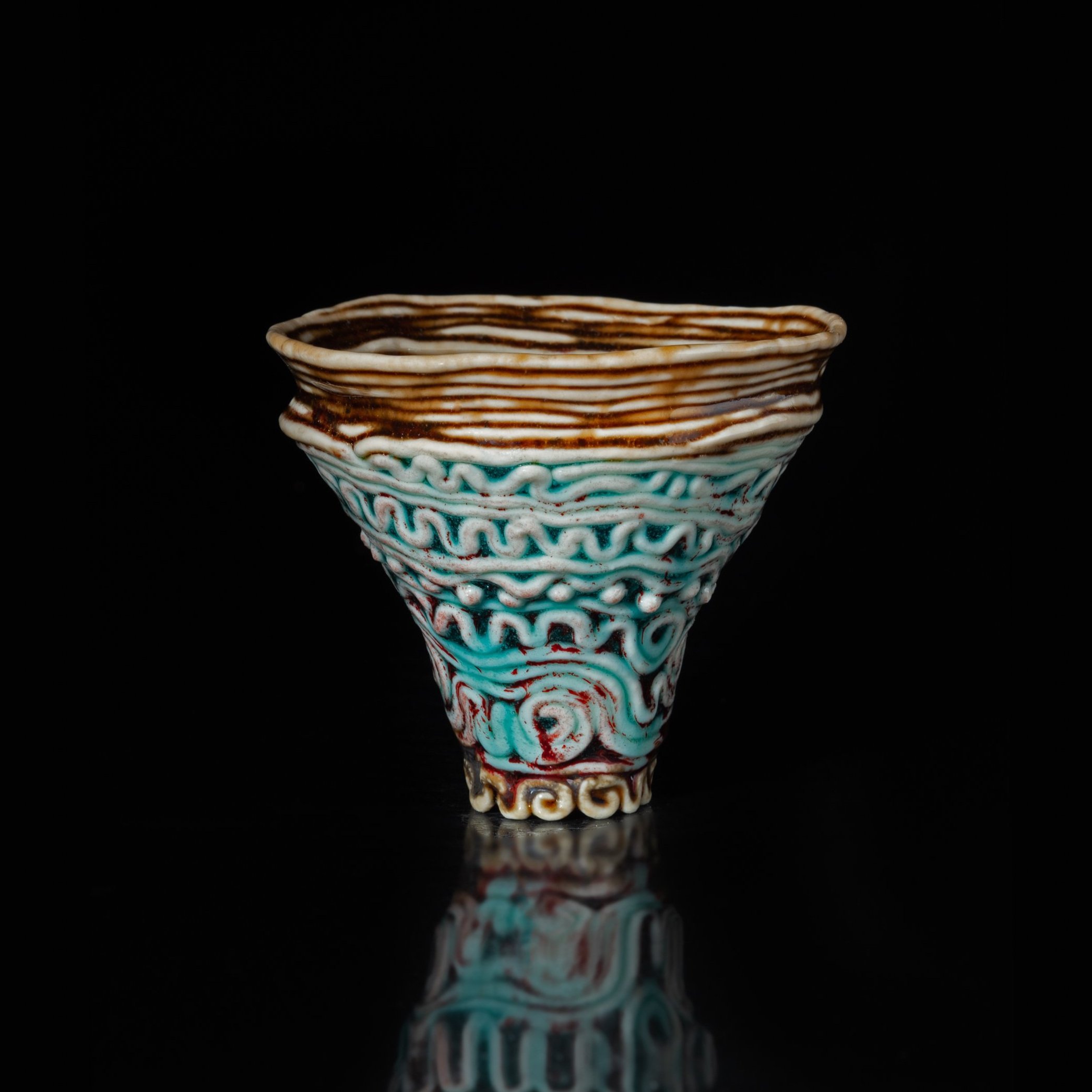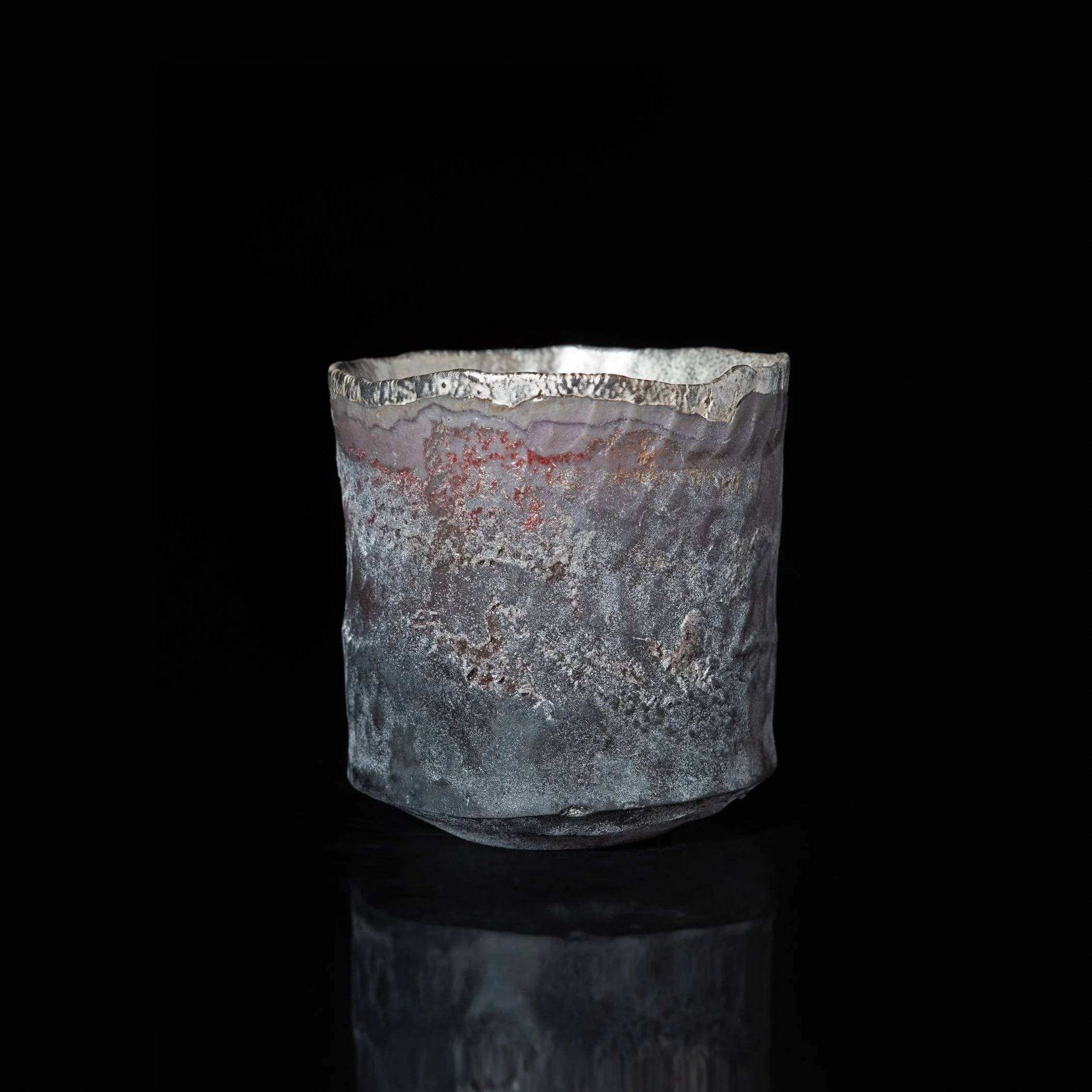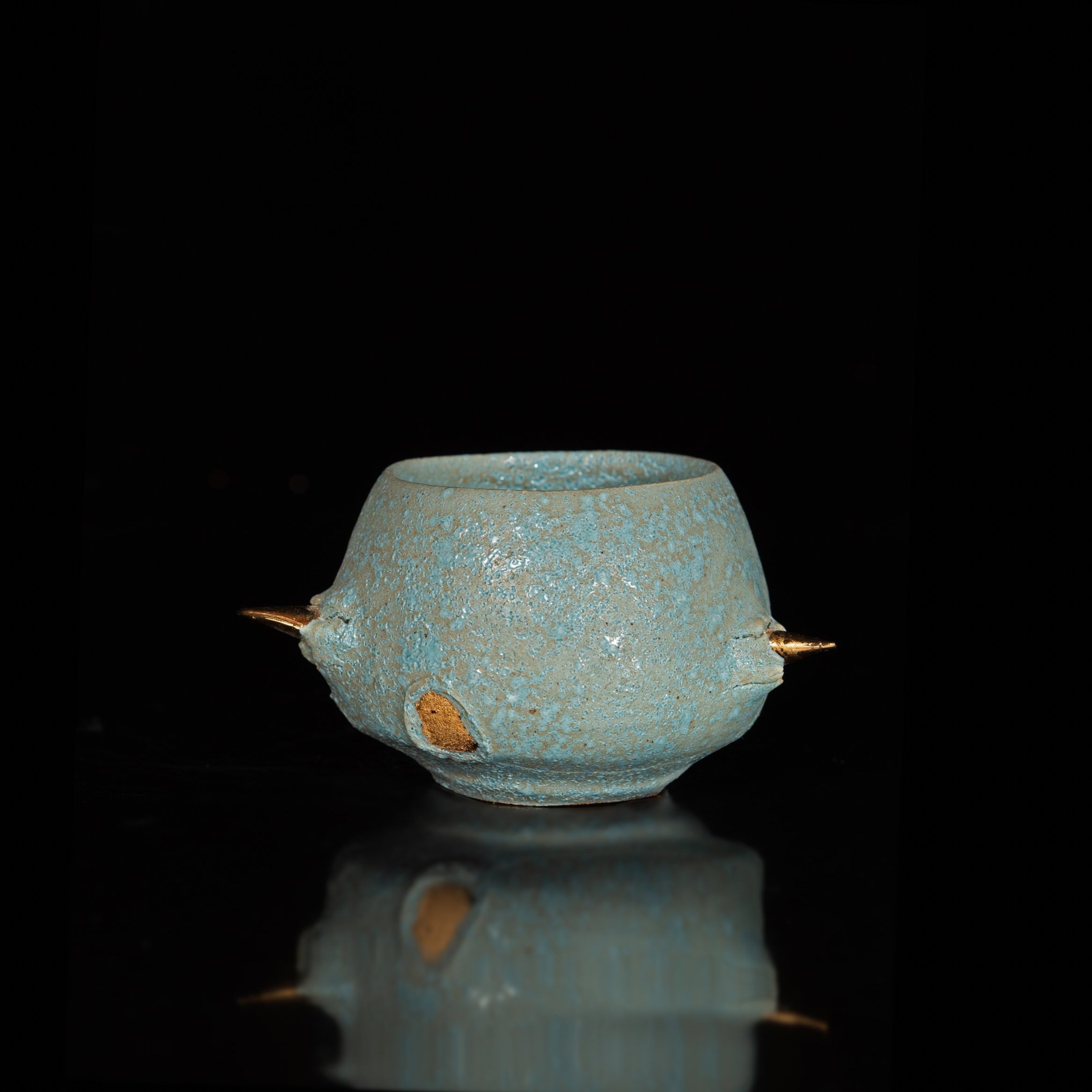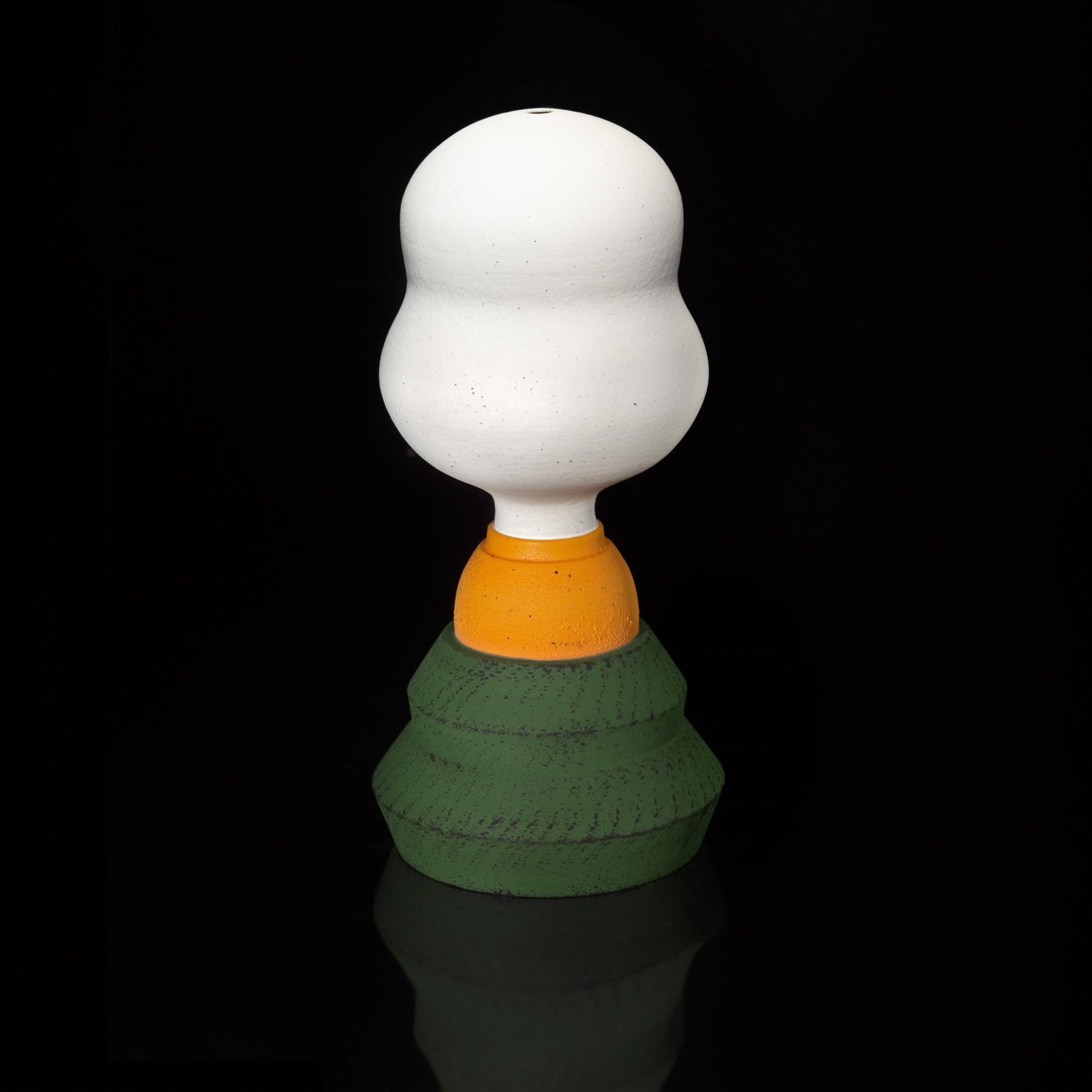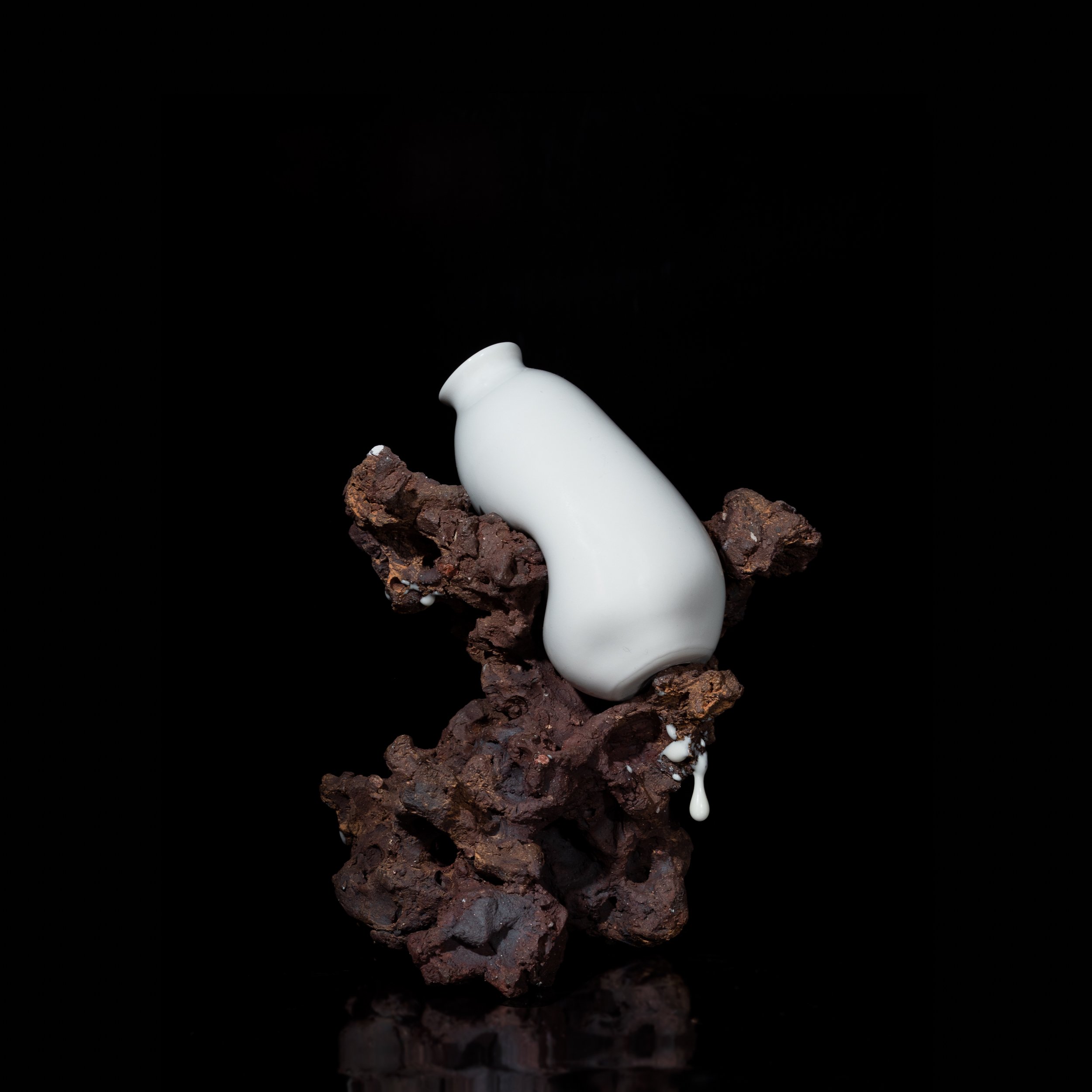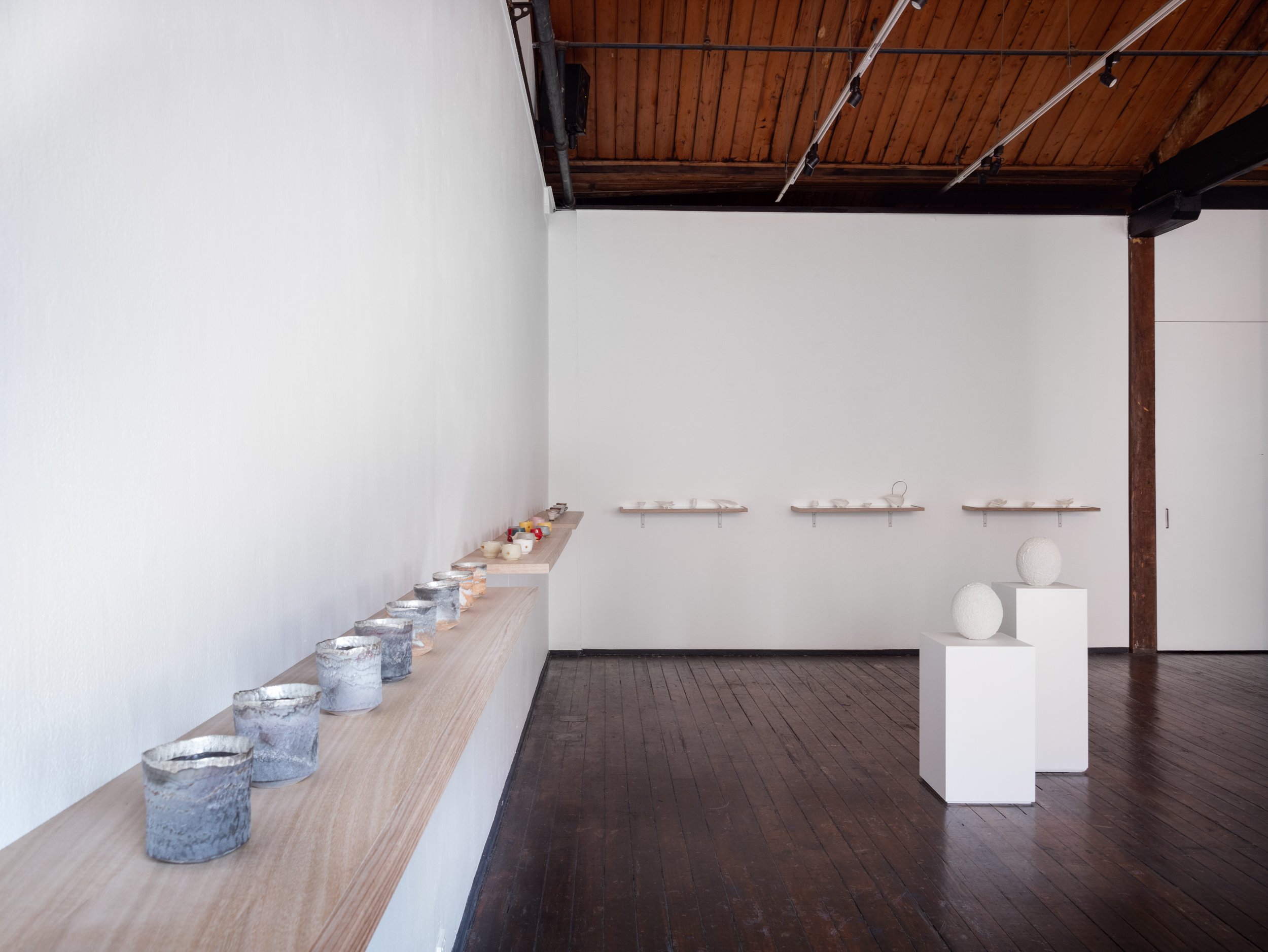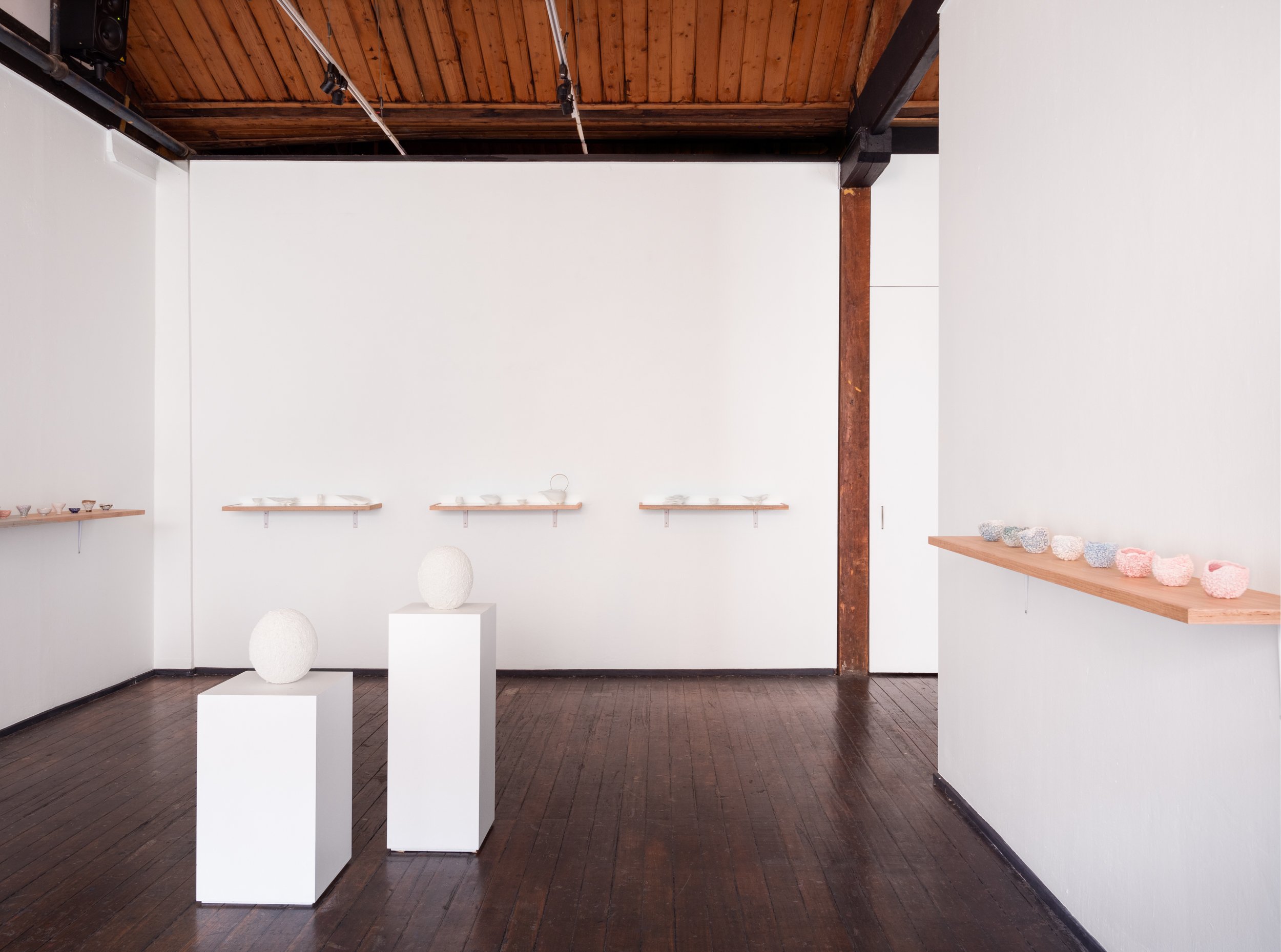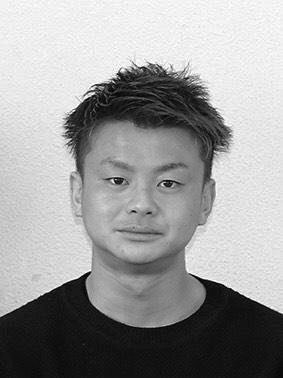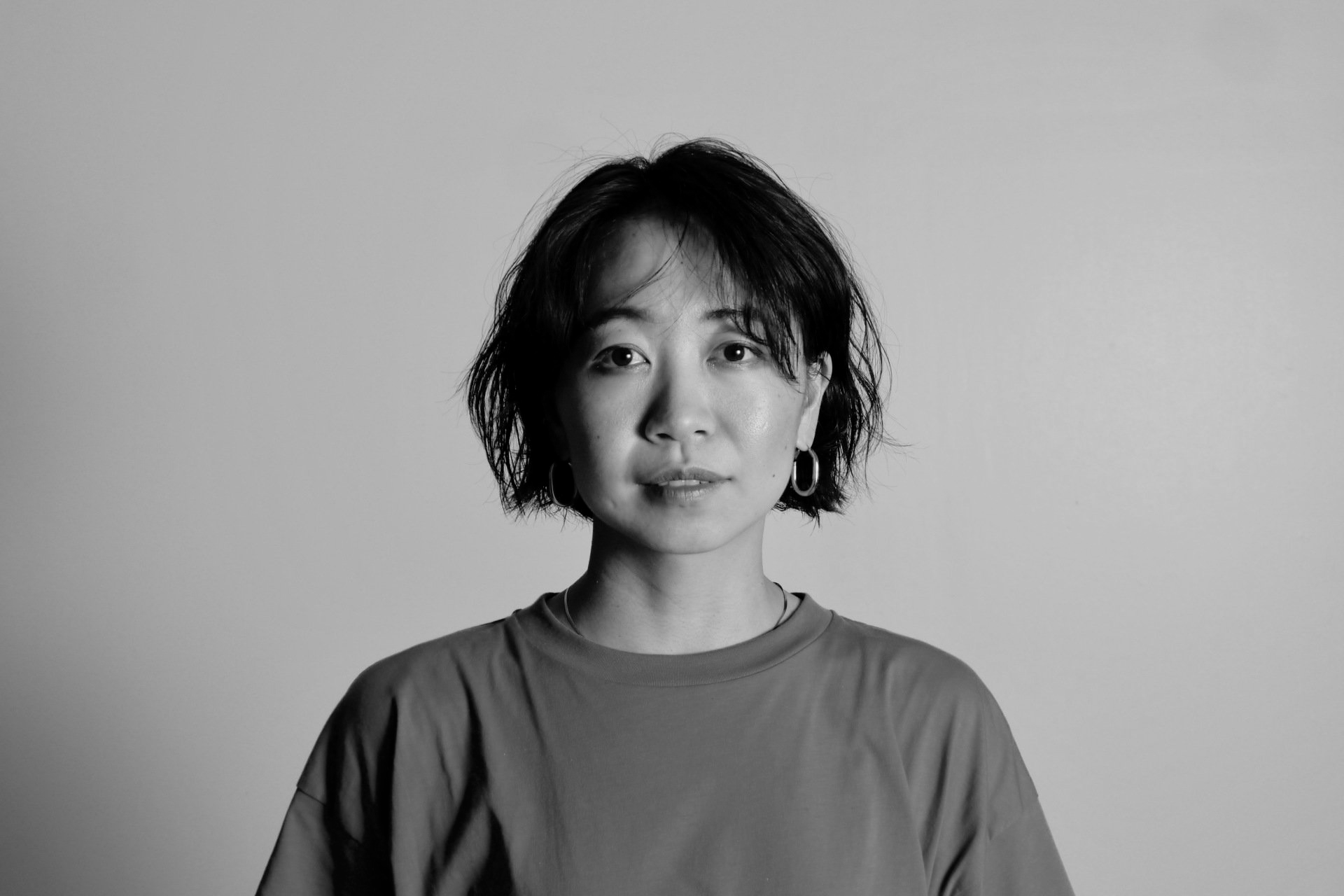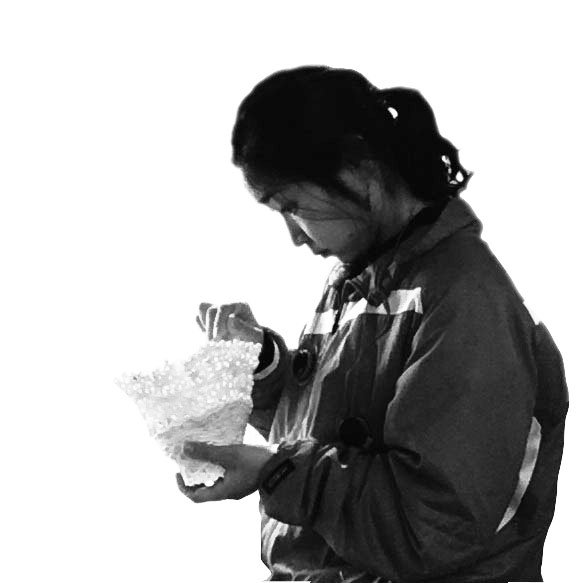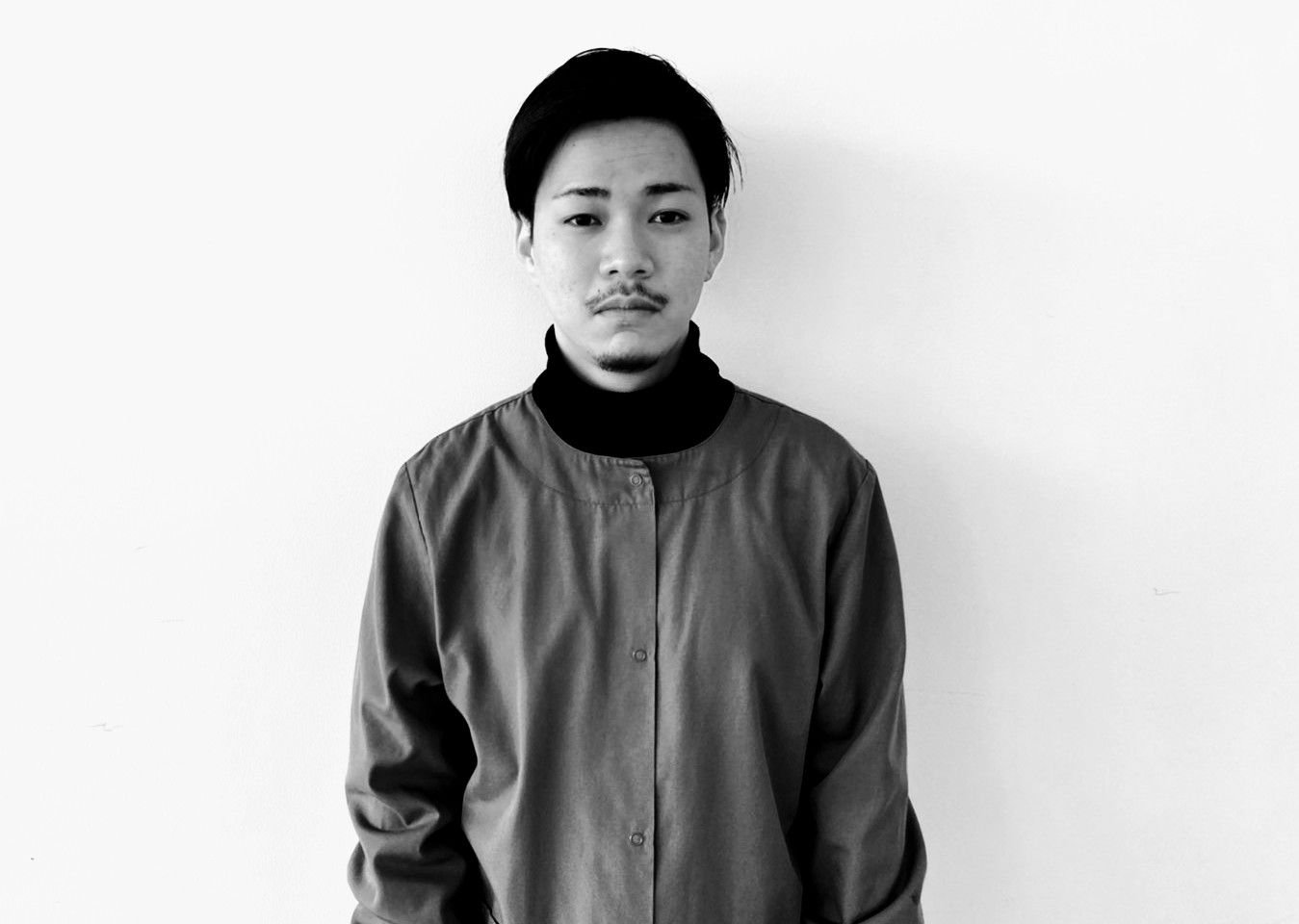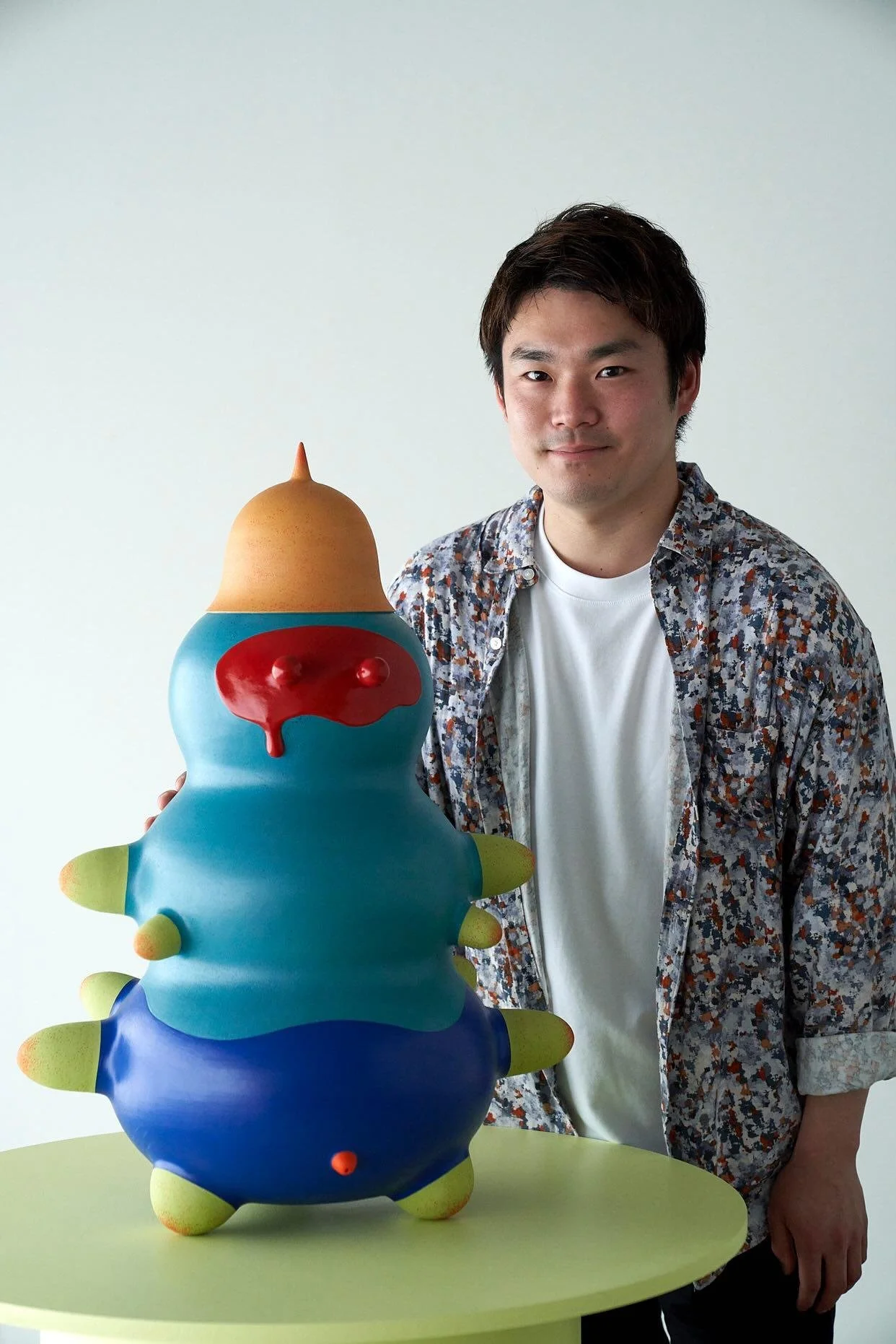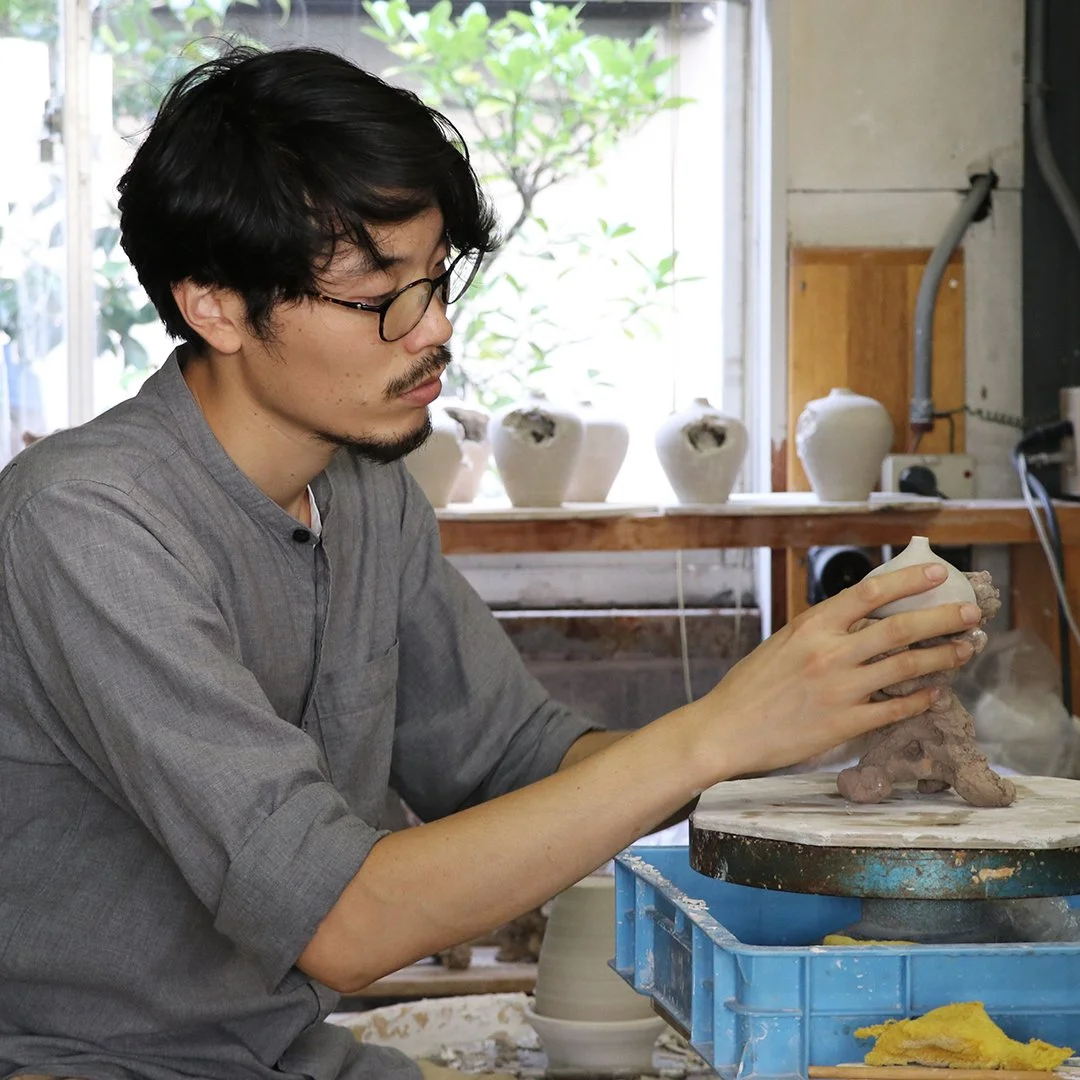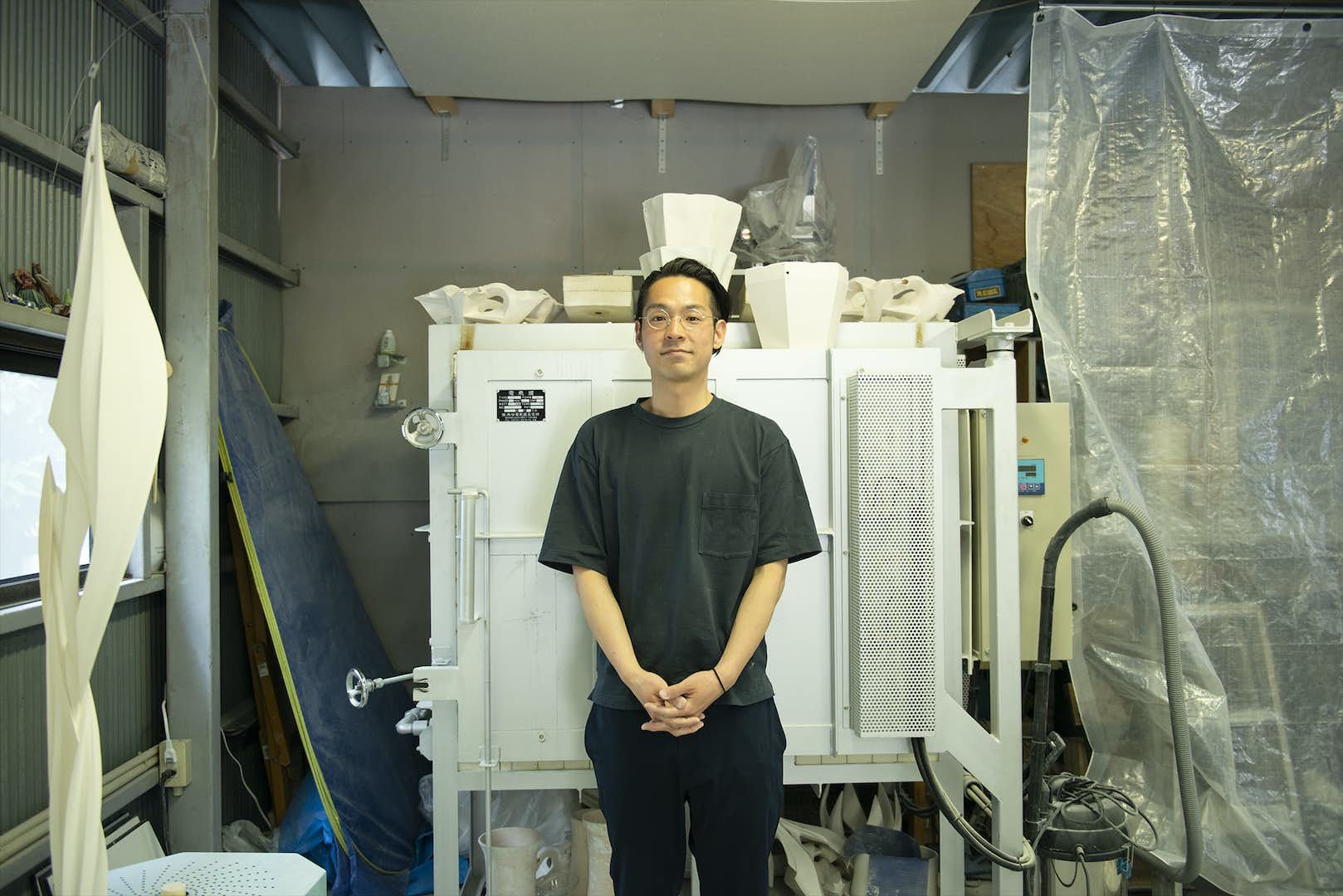Obuje
Semifunctional Form
CURATED BY ION FUKAZAWA & ALISON GROVES
26.05.2023 ~ 11.06.2023
Featuring: Rie Aizawa, Ion Fukazawa, Junpei Hiraoka, Jun Matsumura, Makiko Nagai, Namika Nakai, Tomoya Sakai, Masatomo Toi
The emerging generation of Japanese ceramicists infuses new narratives into a rich history and tradition of working with clay. Trained by Sodeisha lineage ceramicists, the ceramicists in this exhibition inherit the pursuit of technique and material experimentation as a means to express their relationship with clay. Within these boundaries, freedom to flirt with functionality and categorisation grants endless possibilities. This approach to making eludes tidy translations of art, design or craft, to invite a slower consideration of the objects and their materials. Within and beyond western defined art structures, the work is grounded by an innate obsession with materiality.
The title of this exhibition plays with the slippage of art objecthood across cultures and languages, and circles back to the familiar. Obuje is a category of Japanese ceramics adapted from the French objet d’art by the (now disbanded) Sodeisha movement. It highlights the artistic and sculptural potential of the ceramic medium—as opposed to the functional. While the sake cups, semifunctional and sculptural works in this exhibition might ultimately shrug off these words as unnecessary weight, this muddy wordy mess of context is a sandpit for ideas and appreciation, maybe exchanged over sake, ideally sipped from an interesting cup.
Obuje linguistically foregrounds the Japanese context and its history of ceramic materials, and grants makers the freedom to align with or distance themselves from Western art and a broader identification as sculpture. And like all of Japan’s ceramics and broader artistic history, obuje is a fluid site absorbing global influences, like Chinese Cizhou vases and European abstraction—more of a busy port than an untouched island.
The first Sodeisha ‘mud-crawlers’ found clarity in objet d’art as a means of appreciating expressive beauty over functionality. Distinguishing their new pursuit from the decorative kogei (traditional high crafts) aesthetics synonymous with the Mingei movement, early obuje (reflecting the Japanese pronunciation of objet) resisted functionality to the degree that the style could be partly defined by an absence of opening that makes a vessel. Over time the vessel form resurfaced in obuje and functional elements subtly reinserted. Alongside larger sculptural obuje, the Sodeisha inserted amplified expression into conventional forms like tea bowls, to pay the bills and support their more abstract pursuits. What started as a parallel practice has now blended, as with the exhibiting ceramicists: small-scale and semifunctional works channel the energy of larger obuje; functional forms dissolve into obuje aesthetics.
As former students of the second generation of Sodeisha artists, obuje thinking shapes the practices of the ceramicists in this exhibition to varying degrees. What connects this group is this common background and a shared obsession with their material and deep, ongoing material investigation.
Our interest in focussing on sake vessels in this exhibition is two-fold. First, recent Australian museum exhibitions have introduced key figures in contemporary Japanese ceramics and thankfully these exhibitions were resourced to present impressive examples of large-scale obuje. With this groundwork, we can open more niche discussions of emerging practices and consider the collision of obuje and function, and sake vessels like guinomi cups serving up a microcosm of a ceramicist’s style. Second, small-scale obuje sit comfortably in a tokonoma, the designated display alcove of a traditional tatami room. This is the practical scale for many ceramicists working in obuje, the exhibitors included.
The simple guinomi form distils the spirit of larger obuje and for work centred on surface texture the miniaturised palm-sized scale amplifies the impact. Aizawa’s densely fuzzy effect dissolves the boundary of clay and glaze as they typically function. Her original process of layered sprayed glaze and clay imparts airiness to the materials. Much like Nagai’s work, the stoneware body recedes as the glaze seizes the form. The pricks of light dotting Nagai’s work, best glimpsed as the cup nears for a sip, remind us of the intimacy of the small vessel. Guinomi are intended to be felt and pressed against a bottom lip while held lightly between fingers: they are tactile. The soft coils and conical forms of Nagai’s guinomi reference Jomon-era ceramics with their distinctive rope pattern, and the clear puddles of glaze suggest the techniques adopted from Chinese rice-grain ware.
Also playing with tactility and user interaction, Fukazawa combines obuje and functional form. Like unearthed relics, the bulbous tokkuri (sake flasks) and warped guinomi nest into rock-like formations. The earthy textures in Fukazawa’s rocky saucer obuje base are revealed as organic matter burns out in the firing process. Nakai’s similarly geomorphic surfaces are also activated in firing. Transforming finely layered clay and embedded glaze like an alchemist, the saggar firing infuses colour into the clay to realise the stratum effect.
Testing the elastic limits of porcelain, Hiraoka’s original slip recipe answers a technical question of avoiding cracking as the clay shrinks in the firing process. Meanwhile, Toi seeks out these material idiosyncrasies with glaze recipes optimised to crack deeply and drip thickly around deliberately left fingerprints and signature spikes.
Finding expressive language in precision, Matsumura and Sakai demonstrate this midpoint of functionality and obuje with a technical crispness that defeats mechanised production. Sakai’s wheel-thrown components assemble into a nostalgic futurism, disguising and revealing vase, cup and bowl vessel forms. Matsumura’s sharp-edged porcelain works come with a safety label and pierce into space with aerodynamic weightlessness. Carved back from the slip cast form, the ribbons and ridges of the pourers and cups show Matsumura’s material sensitivity.
Fuzzy, spikey, and dissolving completely, this small survey of obuje’s relation to semifunctional form is told through the work of eight emerging and early career ceramicists. Their works speculate on futures, unearth histories, and channel their inner dialogues in, with and of, clay.
Alison Groves
May 2023




